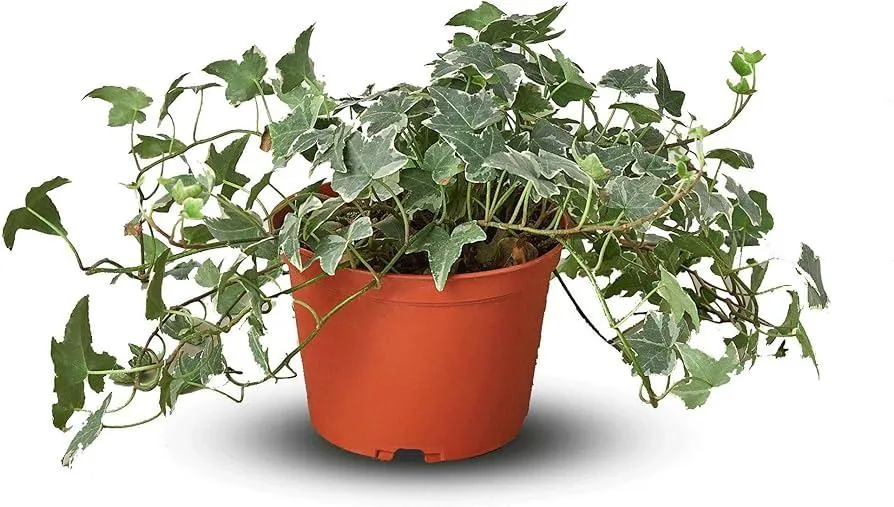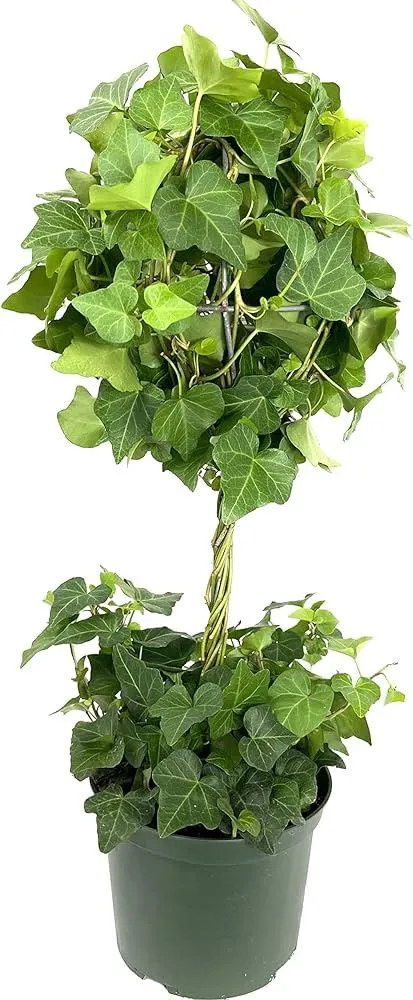The Ultimate Guide to Watering Ivy Plants
If you have ivy growing in your home or garden, one of the most common questions people have is how often they should be watering it. As any ivy owner knows, getting the watering schedule right is key to keeping these popular plants healthy and lush. In this in-depth guide, I’ll answer all your questions about ivy watering and reveal the secrets to growing gorgeous ivy plants.
How Often Should You Water Ivy?
The standard recommendation is to water ivy around once a week. But as with any plant, the exact watering frequency can vary depending on factors like the type of ivy, pot size, indoor vs. outdoor growth, and seasonal weather conditions. As a general rule:
- Indoor ivy plants in small pots may need water every 4-5 days.
- Larger indoor ivy plants or those in hanging baskets can go 5-7 days between waterings.
- Outdoor ivy grown in-ground or in larger containers may only need water once a week, or even less in cooler months.
So in summary, watering ivy around once a week is typically sufficient. But it’s always best to check the soil before watering to make sure it’s dry.
Signs Your Ivy Needs Water
From my experience, one of the best ways to know when to water ivy is to learn its visual cues for thirst. Here are some of the telltale signs that your ivy is in need of a drink:
- The soil is dry about 1-2 inches below the surface.
- Leaves start to curl or wrinkle slightly.
- Leaves lose their vibrant green color and take on a duller hue.
- You may notice the ivy drooping or wilting a bit.
If your ivy is displaying these drought symptoms, it’s time for a thorough watering. Waiting until the plant shows signs of distress means the soil has already dried out too much.
Proper Watering Technique
Once you determine your ivy needs water, the method you use is important too. Here are some watering tips to follow for healthy plants:
- Water thoroughly until the soil is fully saturated and water drains from the drainage holes.
- For indoor plants, water until it runs through the bottom of the pot for 1-2 minutes.
- For outdoor ivy, you may need to water for 5-10 minutes to thoroughly soak the soil.
- Always use lukewarm water at room temperature, never cold from the tap.
- If the leaves get wet, wipe them dry to prevent fungal issues.
Proper watering means giving your ivy a good soak when the soil is dry rather than sprinkling it lightly every day. This trains the roots to grow deep in search of moisture.
Factors That Affect Watering Needs
I keep mentioning that watering schedules can vary – but what factors are most likely to impact how often your ivy requires water? Here are some of the top influences:

Ivy Variety
Certain types like English ivy are quite thirsty compared to species like creeping fig. So botanical variety makes a difference in water demands.
Container Size
Ivy in tiny pots dries out faster than plants in generous containers or those growing directly in the ground. Larger pots hold more moisture.
Indoor vs. Outdoor
Plants in the home typically need water more frequently than hardy outdoor ivy coping with rain and humidity. Sun exposure also impacts water loss through transpiration.
Weather & Season
Warmer days and direct sun cause quicker drying, as do very low humidity levels in some homes. Holiday watering schedules may vary too depending on vacations.
Drainage & Soil Type
From my experience, well-draining potting mixes retain less water than dense, moisture-hogging soils. Poor drainage hastens the need to rehydrate.
Fertilizer & Growth Rate
Increased fertilizer food boosts growth rate, creating more plant mass and transpiration pulling water from the soil faster.
Dealing With Over-Watering Issues
On the flip side of letting soil dry out too much, it’s also possible to accidentally over-water ivy. Here are some tips if you think your plant may be getting too much H2O:
- Check the drainage holes are not blocked preventing excess from escaping.
- Move the plant to a sunny, well-ventilated spot to speed soil drying between waterings.
- Lay pebbles or gravel in the saucer to absorb moisture and discourage fungal growth.
- Use a moisture meter to precisely measure dryness before watering again.
- As a last resort, repot the ivy into fresh, well-draining soil if roots show signs of rot.
The key is finding a happy medium – not too wet, not too dry. With some trial and error, you’ll eventually get the hang of your ivy’s personal watering preferences!

Adjusting Your Schedule As Needed
One piece of advice – don’t be afraid to tweak your watering schedule based on how the plant looks and feels. Schedules are just guidelines. Listen to what your ivy is basically telling you through its appearance and behavior, and adjust the frequency or amount as required. Pay close attention in periods of dramatic weather changes too.
If the soil is drying out faster than expected, slightly increase watering. And vice versa – cut back if you notice signs of over-watering developing. It kinda takes some trial and error at first to really dial in the perfect routine for your specific plant and conditions.
With a little TLC, learning how to read its water needs, and staying flexible – you’ll have happy, lush ivy for sort of forever! Feel free to ask me if you ever have any other water-related plant questions too.
Watering FAQs
Before wrapping up, here are answers to some other common watering queries I frequently receive:
Can ivy survive on just tap water?
Totally! As long as you allow tap water to sit for a day before using it, the chlorine will evaporate and it’s fine for ivy.
Is distilled water better than tap?
Nah, ivy doesn’t really need distilled. Save that high-quality H2O for sensitive plants – tap is great for hearty ivy.
Should I take the pot to the sink or use a watering can?
Either works! I find a watering can lets me avoid disturbing the plant’s position if that matters to you.
Does misting count as watering?
Misting just humidifies foliage – it doesn’t saturate the soil like deep watering. So misting alone won’t meet the plant’s hydration needs long-term.

I forgot to water – is my ivy doomed?
Relax, one missed watering probably won’t kill it. Just give it an extra good drink next time and it’ll perk back up!
That covers the basics of proper ivy watering techniques. Let me know if you have any other questions! With diligent moisture monitoring, your plants should thrive.
How Often Should You Water Ivy
| Type of Ivy | Watering Frequency |
|---|---|
| Outdoor Ivy | Once every 5-7 days during the growing season (spring-fall). Allow soil to dry out slightly between waterings. |
| Indoor Ivy | Once every 7-10 days. Allow top 1 inch of soil to dry out before watering again. |
| During Winter | Reduce watering frequency to once every 2-3 weeks for outdoor and indoor ivy. Ivy needs less water when it is dormant or not actively growing. |
| Signs it Needs Water | Leaves start to shrivel or wilt slightly. Stick your finger 1 inch into the soil. If soil is dry, it’s time to water. |
FAQ
-
How often should you generally water ivy?
Ivy usually needs to be watered whenever the top inch or so of soil becomes dry. Nonetheless, the frequency of watering can differ based on conditions like sunlight exposure and type of ivy plant. As a rule of thumb, ivy grown in bright light may need water every 5-7 days, while those in low light can go around 10-14 days between waterings.
-
Should I water ivy less in winter?
Yeah, you’ll want to water ivy less often during the winter months since it’ll be growing more slowly in the colder temps. Basically, check the soil around once every couple of weeks and give it a drink only if it starts looking kinda dry. Otherwise, leaving it alone over the winter is usually fine.
-
What about ivy grown outdoors – how often does it need water there?
For outdoor ivy, you’ll have to water more regularly during the warmer months when it’s actively growing. Surprisingly, ivy grown outdoors in full sun may need water every few days when it’s scorching hot outside. At the same time, ivy in partial shade can go up to a week between waterings typically. It really depends on how fast the soil is drying out.
-
Should I water ivy from the top or bottom?
Generally, it’s best to water ivy from the top to wet the entire root zone. However, bottom watering works well too if you set the pot in a container of water for 10-15 minutes. This prevents mineral buildup on the leaves. You can also use a fertigation kit or spike for a slow water release directly to the roots if you’re forgetful.
-
What happens if I underwater or overwater my ivy?
Underwatering ivy will cause the leaves to look wilted or dried out since the roots aren’t getting enough moisture. Overwatering, on the other hand, could result in root rot if the soil stays soggy constantly. The leaves might yellow and fall off. It’s about finding the happy medium with ivy – not too wet, not too dry!
-
Does the type of ivy make a difference in watering needs?
Indeed, the specific variety of ivy you grow can have an effect on how often it requires water. Interestingly, English ivy tends to be fairly drought tolerant once established, so you can let the soil dry out more between waterings. Boston ivy and Swedish ivy, however, prefer consistently moist soil and may need watering every few days during hot spells.

-
Any other watering tips for ivy?
Always check the soil before watering – don’t have a set schedule. Avoid getting water on the leaves as much as possible also. Oh, and you may need to water new ivy cuttings or transplants more frequently until they take root and settle in. Keeping notes about your Ivy’s needs could help too since what works for one plant may not for another.
